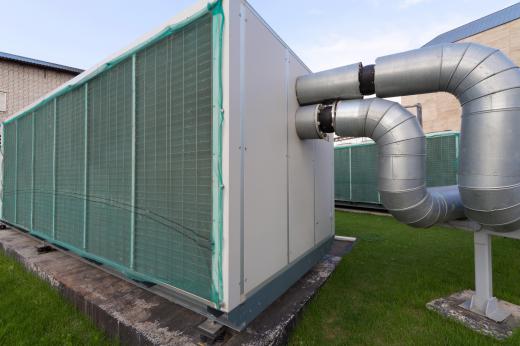Air source heat pumps are highly efficient devices that use the heat gathered from the outside air to heat the inside of a building. Like other heat pump devices, an air source heat pump can reduce heating costs and lower the building's carbon footprint. Air source heat pumps require very little maintenance, and the operating costs are minimal after the initial expenses of purchase and installation.
There are two kinds of heat pumps: air source and ground source. When the phrase "heat pump" is used, it generally is in reference to an air source heat pump. This is because the air source heat pump is the most common heat pump installation. Ground source heat pumps are more efficient than air source heat pumps, but the additional expenses for their purchase and installation is often prohibitive.

The basic function of air source heat pumps is quite simple. A coolant liquid is pumped through the coils within the heat pump, and it transfers heat from a cooler area to a warmer area, using the warmer area as a heat sink. The outside coils of air source heat pumps gather or release heat depending on whether the thermostat control is set for heating or cooling.

Air source heat pumps are used to heat buildings in the cooler months, but they also are used for cooling during warmer periods and, in the case of air-to-water systems, the system is also used for the production of hot water. The air source heat pump is considered to operate at 300-400 percent efficiency, meaning that it consumes one-third to one-fourth of the electrical energy used by typical electric heating units to produce the same amount of heat. Although air source heat pumps are not as efficient as ground source heat pumps, they are much more efficient than gas, oil or electric heating units.
The outside coils of air source heat pumps are installed on an outside wall or concrete pad in a location where the unit has plenty of room for air movement. If the air source heat pump is installed in an area where the outside coils will be heated by the sun, it can further improve the unit's efficiency. Air source heat pumps can be installed in preexisting buildings, but installing the heat pump system during construction can minimize the total cost. By replacing existing heating systems with an air source heat pump in well-insulated homes, energy use can be reduced to the point of making the installation a cost-effective heating solution.
